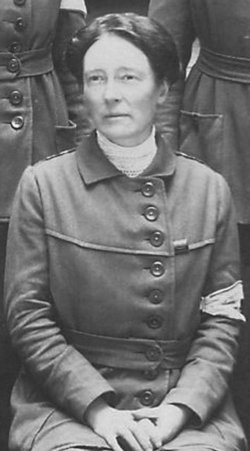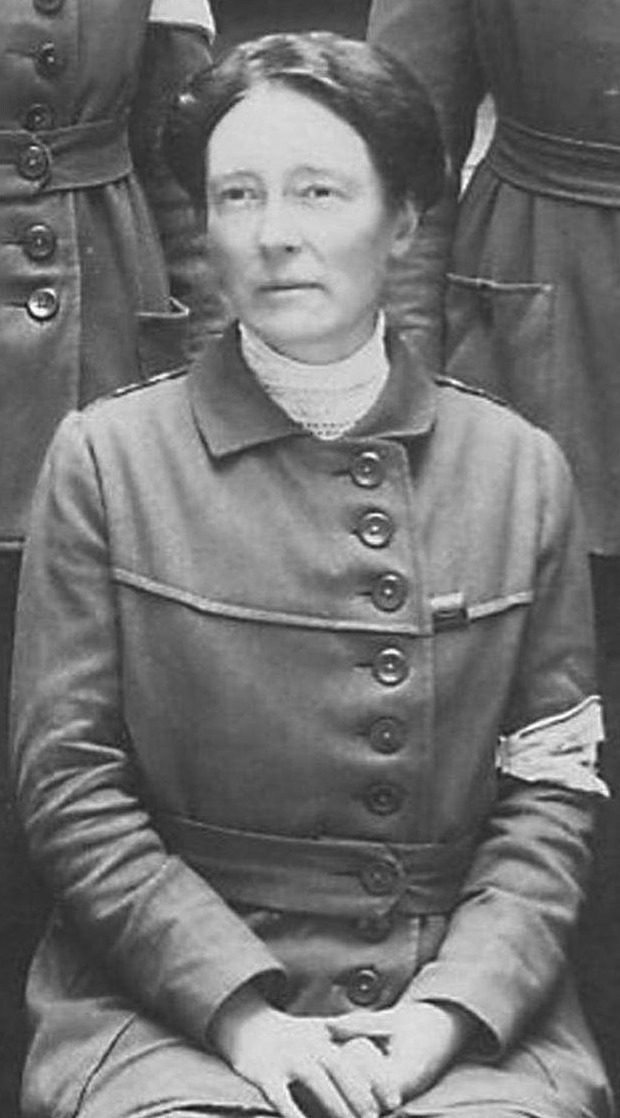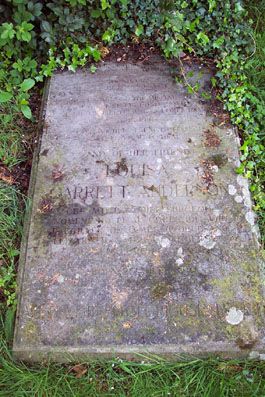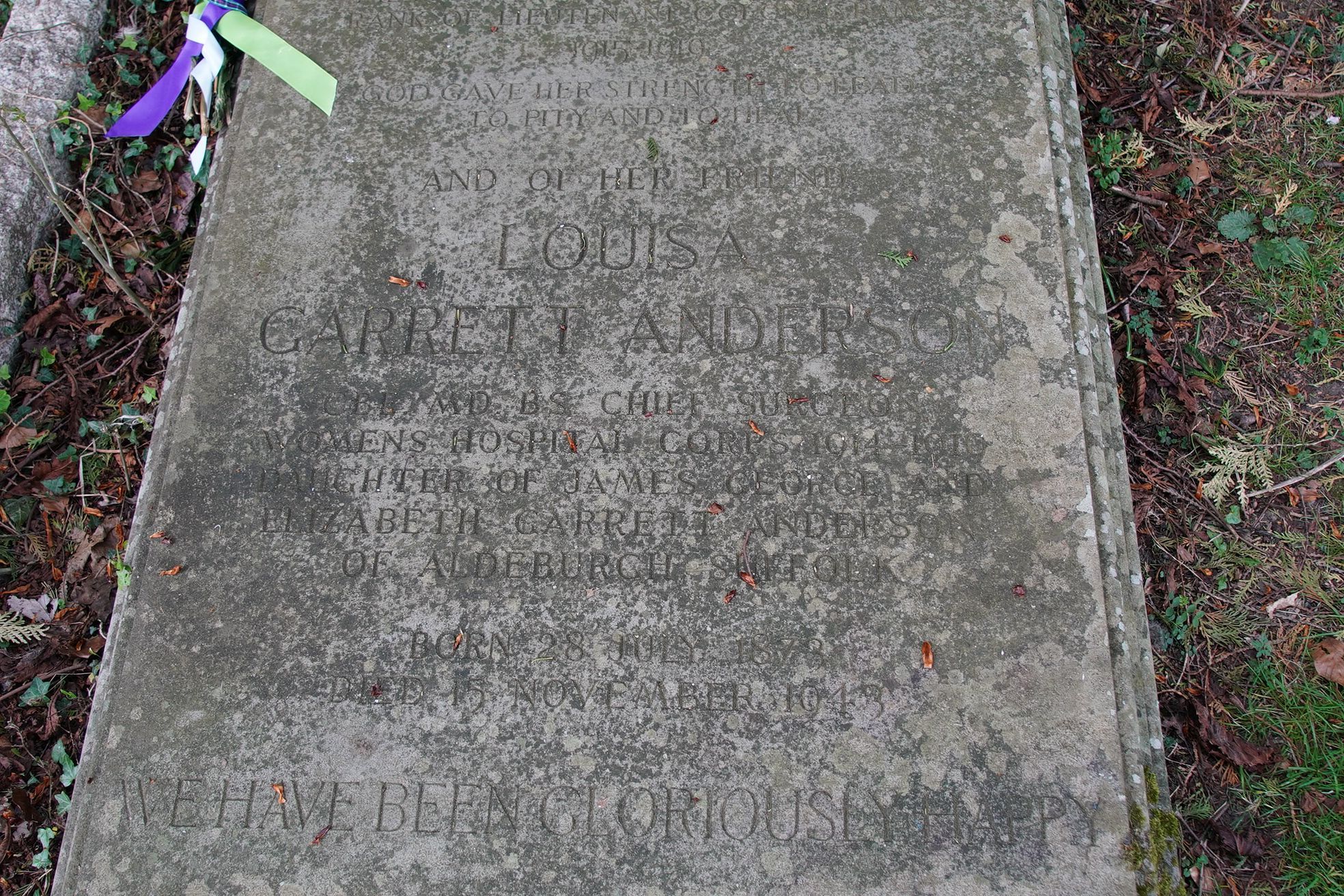Additional information:
The concept of the Women's Hospital Corps was created and instituted in 1914. Previously met with hostility by officials, Doctors Flora Murray and Louisa Garrett Anderson decided to bypass the British government by going directly to the French Embassy with their offer to run a military hospital in Wimereux, France. Their idea was accepted and they were granted work permits to travel to France. In less than two weeks, Murray and Anderson were able to recruit enough medically trained women to staff an entire hospital; doctors, nurses, orderlies, and clerks. The women created uniforms and raised funds for the supplies needed. The hospital closed in January 1915 when injured soldiers started being treated in England rather than in France.
By May 1915 Murray and Anderson had moved to London and, drawing experience and staff from the hospital in France, the Endell Street Military Hospital was established in London as a Royal Army Medical Corps (RAMC) hospital under the War department. Leading the hospital, Murray was named Doctor in Charge and Anderson was named Chief Surgeon. While working under the authority of the War Office, women doctors at the Endell Street Military Hospital received the pay and benefits of military grades from lieutenant to lieutenant colonel, but they had no rank and could not command men. The hospital was unique in that it was the only hospital to be almost entirely run by women. The Endell Street hospital had 573 beds, allowing for some 26,000 patients to be cared for during the five years it was active. Several auxiliary Voluntary Aid Detachment hospitals with a total of 150 beds were attached to the Endell Street hospital. At times of pressure when billeting of convalescent men was allowed, the numbers of registered patients was as high as 800. The hospital adopted the motto, "Deeds not words", which was also the motto of the WSPU (Women's Social and Political Union). The women hoped that eventually the hospital and their deeds would prove women's equality and their ability to fulfil their duties as citizens. Despite skepticism by the RAMC in the women's medical staff ability to run a hospital, Endell Street received high feedback from patients, recognition in professional medical journals, and the successful treatment of a large number of soldiers during its operation. Endell Street hospital was amazingly successful and one of the reasons for this was their attention to the psychological needs of the soldiers. Great emphasis was placed on creating a calming and home-like environment with fresh flowers in every room, brightly coloured blankets, standard lamps for reading, and 'our gentle merry young orderly girls who feed them with cigarettes, write to their mothers and read to them.' The hospital closed shortly after the end of the war in December 1919, treating large numbers of influenza patients in the last months.
In 1917, Murray and Anderson each received the CBE (Commander of the Most Excellent Order of the British Empire) for their work in the hospital.
At Endell Street, Anderson and the hospital pathologist, Helen Chambers, pioneered a new method of treating septic wounds, an antiseptic ointment called BIPP (bismuth, iodoform, and paraffin paste). The paste had been invented by James Rutherford Morison. After positive results from some initial tests by Anderson, Morison asked her and Chambers to run a larger trial of BIPP in 1916. Anderson published case studies in The Lancet, concluding that this method saved patients pain and was better than the Carrel-Dakin method, which used a more powerful antiseptic but had to be frequently reapplied to be effective. Since bandages could be left on for longer, the BIPP method reduced time spent changing bandages by as much as 80%. BIPP was widely adopted by surgeons for the rest of the war, although opinion among doctors remained divided as to the best method for wound treatment. Despite continued debate, BIPP was also used in the Second World War and continues to be in use today in ear, nose, throat, maxillofacial, and neurosurgery procedures.
After the war, Anderson and Murray moved to their co-owned property in Penn. After Murray died in 1923 Anderson stayed on in Penn and played an active part in local affairs. She, became a magistrate and was the second woman to be elected to Penn Parish Council on which she served from 1932 to 1940, taking a particular interest in the War memorial. She is recorded as opening a church bazaar in Penn Street. On the outbreak of WW2, Louisa let the house and went to work as a member of the surgical staff in the Elizabeth Garrett Anderson hospital in London. She became seriously ill in 1943 and was at first treated in the hospital named after her mother, before being taken to a nursing home in Brighton, where she died on 15 Nov 1943. She was cremated at Brighton and her ashes scattered on the South Downs, but her family arranged for an inscription commemorating her friendship and work with Flora Murray to be placed on the latter's tombstone in the churchyard at Holy Trinity, Penn.
Anderson and Murray fought tirelessly for the rights of women to vote, receive military rank, and get the same benefits as their male counterparts in the military.
Additional information:
The concept of the Women's Hospital Corps was created and instituted in 1914. Previously met with hostility by officials, Doctors Flora Murray and Louisa Garrett Anderson decided to bypass the British government by going directly to the French Embassy with their offer to run a military hospital in Wimereux, France. Their idea was accepted and they were granted work permits to travel to France. In less than two weeks, Murray and Anderson were able to recruit enough medically trained women to staff an entire hospital; doctors, nurses, orderlies, and clerks. The women created uniforms and raised funds for the supplies needed. The hospital closed in January 1915 when injured soldiers started being treated in England rather than in France.
By May 1915 Murray and Anderson had moved to London and, drawing experience and staff from the hospital in France, the Endell Street Military Hospital was established in London as a Royal Army Medical Corps (RAMC) hospital under the War department. Leading the hospital, Murray was named Doctor in Charge and Anderson was named Chief Surgeon. While working under the authority of the War Office, women doctors at the Endell Street Military Hospital received the pay and benefits of military grades from lieutenant to lieutenant colonel, but they had no rank and could not command men. The hospital was unique in that it was the only hospital to be almost entirely run by women. The Endell Street hospital had 573 beds, allowing for some 26,000 patients to be cared for during the five years it was active. Several auxiliary Voluntary Aid Detachment hospitals with a total of 150 beds were attached to the Endell Street hospital. At times of pressure when billeting of convalescent men was allowed, the numbers of registered patients was as high as 800. The hospital adopted the motto, "Deeds not words", which was also the motto of the WSPU (Women's Social and Political Union). The women hoped that eventually the hospital and their deeds would prove women's equality and their ability to fulfil their duties as citizens. Despite skepticism by the RAMC in the women's medical staff ability to run a hospital, Endell Street received high feedback from patients, recognition in professional medical journals, and the successful treatment of a large number of soldiers during its operation. Endell Street hospital was amazingly successful and one of the reasons for this was their attention to the psychological needs of the soldiers. Great emphasis was placed on creating a calming and home-like environment with fresh flowers in every room, brightly coloured blankets, standard lamps for reading, and 'our gentle merry young orderly girls who feed them with cigarettes, write to their mothers and read to them.' The hospital closed shortly after the end of the war in December 1919, treating large numbers of influenza patients in the last months.
In 1917, Murray and Anderson each received the CBE (Commander of the Most Excellent Order of the British Empire) for their work in the hospital.
At Endell Street, Anderson and the hospital pathologist, Helen Chambers, pioneered a new method of treating septic wounds, an antiseptic ointment called BIPP (bismuth, iodoform, and paraffin paste). The paste had been invented by James Rutherford Morison. After positive results from some initial tests by Anderson, Morison asked her and Chambers to run a larger trial of BIPP in 1916. Anderson published case studies in The Lancet, concluding that this method saved patients pain and was better than the Carrel-Dakin method, which used a more powerful antiseptic but had to be frequently reapplied to be effective. Since bandages could be left on for longer, the BIPP method reduced time spent changing bandages by as much as 80%. BIPP was widely adopted by surgeons for the rest of the war, although opinion among doctors remained divided as to the best method for wound treatment. Despite continued debate, BIPP was also used in the Second World War and continues to be in use today in ear, nose, throat, maxillofacial, and neurosurgery procedures.
After the war, Anderson and Murray moved to their co-owned property in Penn. After Murray died in 1923 Anderson stayed on in Penn and played an active part in local affairs. She, became a magistrate and was the second woman to be elected to Penn Parish Council on which she served from 1932 to 1940, taking a particular interest in the War memorial. She is recorded as opening a church bazaar in Penn Street. On the outbreak of WW2, Louisa let the house and went to work as a member of the surgical staff in the Elizabeth Garrett Anderson hospital in London. She became seriously ill in 1943 and was at first treated in the hospital named after her mother, before being taken to a nursing home in Brighton, where she died on 15 Nov 1943. She was cremated at Brighton and her ashes scattered on the South Downs, but her family arranged for an inscription commemorating her friendship and work with Flora Murray to be placed on the latter's tombstone in the churchyard at Holy Trinity, Penn.
Anderson and Murray fought tirelessly for the rights of women to vote, receive military rank, and get the same benefits as their male counterparts in the military.
Bio by: Iain MacFarlaine
Family Members
Advertisement
See more Anderson memorials in:
Records on Ancestry
Sponsored by Ancestry
Advertisement





